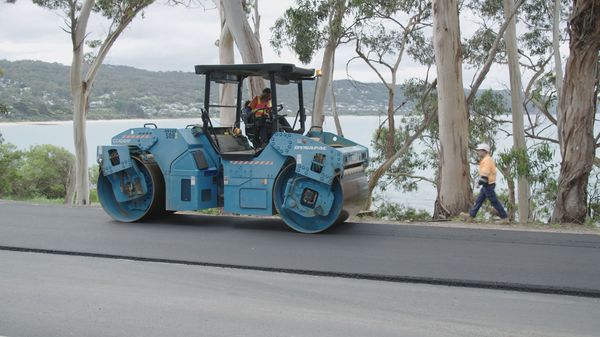Old bumpers and plastic car parts are now part of the Great Ocean Road in a “ground-breaking” resurfacing of a 1.5km stretch near Lorne.
A Geelong-based company supplied more than three tonnes of recycled plastic – equivalent to about 730,000 plastic bags – for the resurfacing, according to Regional Roads Victoria.
“This project will save an amount of plastic equal to about 300,000 plastic bottles from entering landfill,” the authority’s regional director Ms Miller-Olsen said.
“We’re constantly looking for ways to improve the sustainability of our road-building and repair practices.”
The project on the “famous” route was the first to use PlastiPhalt on a Victorian arterial road and a “significant” achievement in recycling, Ms Olsen said.
Workers also recycled the site’s existing asphalt for about 10 per cent of the new surface, and laid the mix at a lower temperature to lower carbon emissions, she said.
The works are part of $50 million in State and Commonwealth funding for the Great Ocean Road.
Geelong-based company GT Recycling used exterior car parts to make the plastic component of the asphalt mix, its business development manager Brett McLean explained.
“It’s derived from automotive parts from local commercial sites, which would normally (go to) landfill,” he said.
The process had created extra jobs with the company investing in new technology to process the plastic parts, Mr McLean said.
Asphalt maker Fulton Hogan then blended the plastic component into the mix.
The company’s Lara production supervisor Ryan Craig described using broken bumpers and similar components as a great use of resources.
“It actually improves the performance of the asphalt, it’s a two-for-one special,” he said.
Performance testing indicated the mix had improved strength, durability and longevity compared to traditional asphalt, Mr Craig said.
The company began supplying PlastiPhalt for a few small stretches of road about two years ago and had yet to assess its long-term performance, he said.
But based on testing Mr Craig expected the new surface to last longer than normal asphalt.
“Hopefully that stretch stands up to the test of time and (becomes) another valuable part of the Great Ocean Road.”







